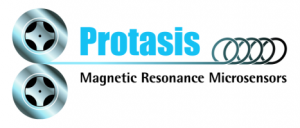|
Manage NMR Spectral Libraries |
|
|
Need a second shift to get the work done?   The 1mm MicroFlow NMR probe is 100 times faster than a conventional 5mm probe for the same amount of material.   Using only microliters of your precious sample, MicroFlow NMR reduces proton spectral acquisition times to as little as two minutes, enabling you to complete a 96-well plate in an overnight run.Get ready! Now that MicroFlow NMR is fast, automated and sample- and reagent-efficient, it won’t be long before new projects and a flood of new samples comes your way.    If you are in Discovery, chances are your company will gather NMR spectra on each and every drug lead. When your development colleagues hear about it, they will bring you more metabolite and impurity samples. If your company sells reagents or libraries, you will soon be adding NMR to your certificates of compliance. Protasis can help you keep up today. Get started on your HT-NMR future today |
|
Protein-Ligand Binding |
|
|
New techniques to study receptor-ligand interaction, such as Saturation Transfer Detection (STD) methods, show advantages over diffusion based methods, most notably in their overall sample and concentration requirements. Proteins can be magnetized and then presented with multiple drug leads. If binding occurs, energy is transferred from receptor to ligand allowing the bound drug lead’s spectra to pop up like a beacon announcing a hit! Requiring no special preparation, MicroFlow NMR lets you rapidly screen your small molecule libraries against new protein targets. Overall, NMR binding assay methods show promise as a general lead identification tool and may be particularly useful in screening genomics targets where functional assays are not available. Protasis/Novatia software automates the liquid handling, mixing, spectral acquisition and archiving. |
|
|
|
